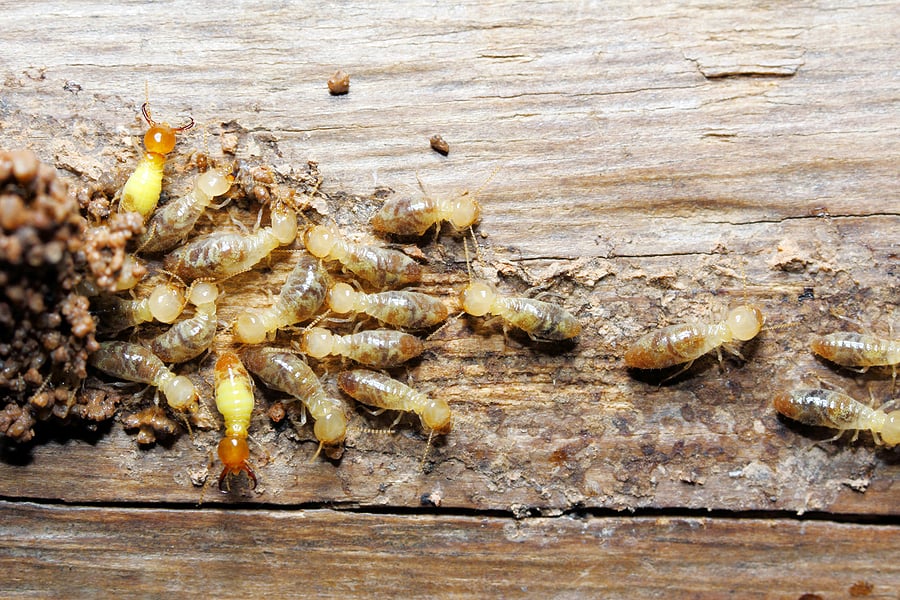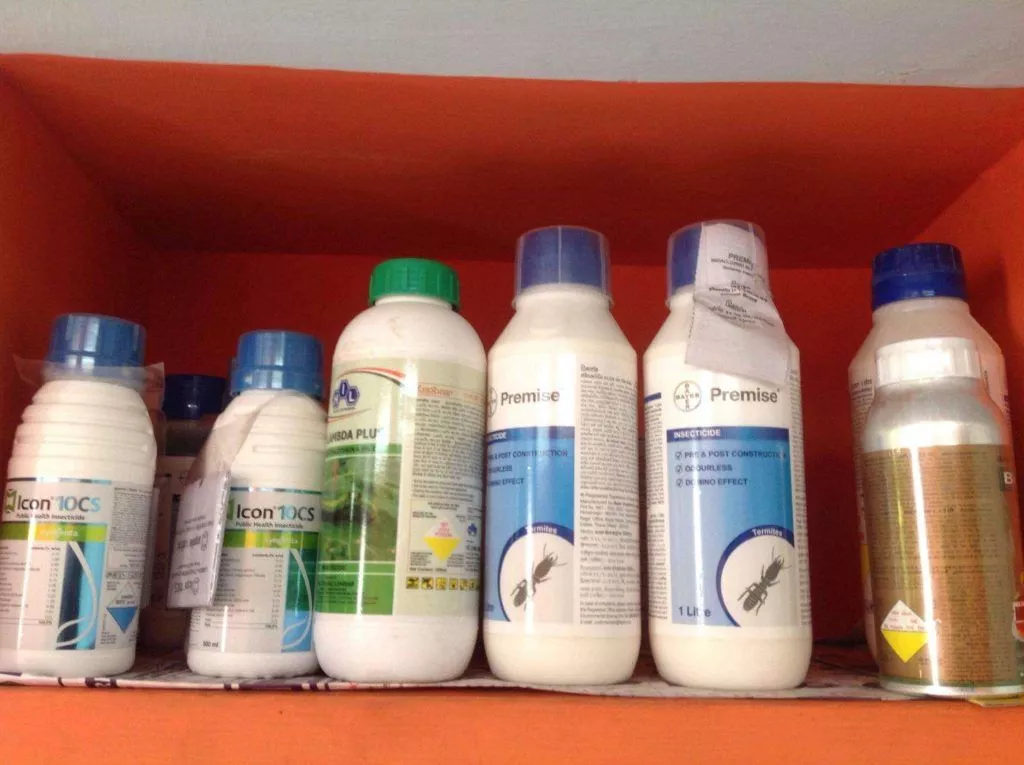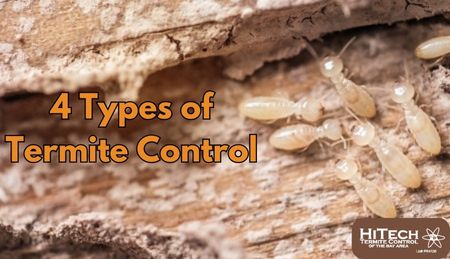
In the United States, termites cause more than $1 billion worth of damage annually. The average homeowner finds himself replacing wood in his house far too often, contributing to that figure. Luckily, there are both curative and preventative measures for dealing with termite infestation. This guide aims to equip you with necessary knowledge on termite control so that you are able to get rid of, kill, and prevent termites from invading your home.
Caution: Use pesticides with extra care where children or pets are present.
Flying ants share a strikingly similar appearance with termites. To the untrained eye, both seem identical. However, having the right approach helps in distinguishing them for the purpose of effective pest treatment. Identifying the right pests to treat is critical towards successfully getting rid of many common household pests.
Ants:
Wings – A front pair of wings larger than the rear pair and somewhat bigger than the body.
Body – The thorax and abdomen is clearly separated.
Antennae – Distinguished elbowed antennae with an elongated first segment.
Termites:
Antennae – Short and straight, and lacking eyes.
Wings – Two pairs of the same length wings, each at least double the body length.
Body – Smooth and ribbed abdomen without waist indentation.
What are termites exactly? There are numerous ways to spot a termite, but sight alone does not help. Termites tend to create mud tubes, which are hollowed out mud pipes about a quarter of an inch in diameter, that connect to the ground or any wooden structures like a house or a garage.
Carefully inspect all wood structures for signs of deterioration by tapping gently to check if the beam is made from solid or hollow timber. If a solid beam sounds hollow while the other does not, chances are you have a termite problem. A skeleton of wings is an indicator that might identify your bones being shed after locational conquest. These wings denote reproductive termites that shed their wings after finding a place to settle.
If the mud tubes are moist, then the tunnels are actually in use.
Check the external electrical meters and fuses for any sign of termite activity.
Look for cracks along the perimeter of your house for possible entrances.
Look for indications of water damage and wood decay, as well as mud tunnels, in the attic.
What are Termites Attracted To?
Sadly, numerous factors can draw termites to your property.
Termites are attracted to all types of wood. Depending on the species, they could be lured to either dry or damp wood. Since termites consume wood, it would logically be the first thing to grab their attention.
Wet soil is also a big attraction for termites. Moist soil helps termites survive due to lack of water. Some species of termites even utilize wet soil to form mud tunnels.
Termites seek sheltered and warm areas. To avoid disturbance, they look for the best places to hide. It is essential to periodically clean gutters and pipelines to prevent termites.
You can manage termites better by limiting some conditions that invite their presence. But taking action ahead will show you how to get rid of termites effectively. Read further for more ways to prevent termites from infesting your home.
Termite Treatment
Though the professionals will handle the termite removal and extermination services, understanding the techniques they use, such as how to kill termites and treat infestations, is useful when considering ways to defend against the pests invading.
One simple way on how to get rid of termites is to treat the soil surrounding the structure with a termiticidal insecticide like imidacloprid or fipronil. Wood can also be treated directly in case of infestations inside the structure.
As part of termite baiting, termite baits are placed around your yard to attract termites. The baits are then treated with slow-acting insecticides or insect growth regulators. The termites now go back to their colony where they will infect other termites with poison.
Foam agents can be used in places where liquid pesticides cannot reach.
Dust agents are used to fill places where foam or liquids seem impractical.
All the termites in a given region are killed using fumigation services, however their return will not be prevented.
When it comes to treated soil with termite preventive measures it’s best not to disturb them.
Termite Prevention
Pest control specialists have found that taking measures to eliminate the existence of termites can be effective for the user’s budget. Shutting down any moisture accessible regions around your residential structure is key to termite prevention as moisture is crucial for termite colonies’ existence.
Check the drains along with the plumbing system for leaks, check the grading for slopes, and check the air conditioners for any possible leaks as well to make sure that the area around your house remains dry.
Try to limit any form of contact wood has to the ground.
If possible, switch the soil around your house to sand if you have wooden floors, as sand does not allow termites to build tunnels in it.
Do not stack firewood beside your home and clear any tree stumps located in the yard.
Make sure that there is an allowance of at least six inches between the ground and wooden decks, porches, and patios.
Termite-resistant wood is an excellent choice for areas where the wood is bound to come into contact with the ground. Moreover, the wood should be pretreated when constructing or remodeling the house.
Always make sure that the gutters along with other drain spouts are cleared out to avoid water build-up.
Timely check-ups can help maintain the condition of your house and should be done at set intervals.
Seal the outer parts of the house, for example, vents using steel mesh instead of plastic that is resistant to termites. This allows the opening to function as a vent while blocking entrance for unwanted pests.
Maintaining the exterior of the house and taking steps towards termite prevention helps in blocking termite invasion. If anything else, seek a professional for inspection when needed.
You might also like :


